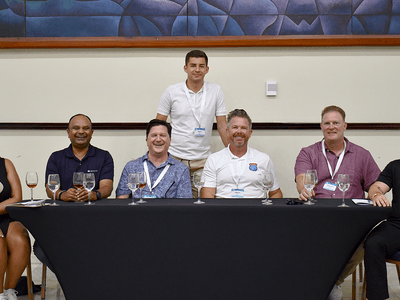Nearshoring is one of the most effective ways to scale your tech capabilities, combining proximity, cultural alignment, and cost efficiency. But when implemented without the right structure, nearshore partnerships can quickly turn into bottlenecks.
Here’s a breakdown of the most common mistakes companies make when building nearshore teams, and what you can do to avoid them.
Focusing Only on Cost Instead of Quality
We understand cost efficiency is likely the biggest reason you’re considering nearshoring in the first place, but choosing a provider or team based solely on the lowest rate often leads to poor code quality, rework, and delivery delays.
How to avoid it: Evaluate technical depth, communication skills, and proven experience, not just pricing. Look for partners who screen candidates with technical interviews, coding tests, and project-based assessments.
Undefined Roles and Ownership
When responsibilities aren’t clearly assigned, teams lose time, duplicate effort, or struggle with accountability.
How to avoid it: Establish clear ownership for each function and module. Define escalation points, communication lines, and project leadership from day one, and if you are working through a nearshoring partner, inquire about their approach to account/success management.
Weak Communication Structures
Even with nearby time zones, communication breakdowns happen, often due to unclear expectations or cultural gaps.
How to avoid it: Create structured meeting cadences (stand-ups, retrospectives), define your preferred channels (Slack, Teams), and ensure transparency through shared tools like Jira or Trello. More importantly, screen not just for technical alignment, but for cultural synergy and communication at the very start.
Incomplete Onboarding and Knowledge Transfer
Without proper onboarding, new developers lose context, increasing ramp-up time and risk of misalignment.
How to avoid it: Plan for joint kick-offs, documentation walkthroughs, and pairing sessions with senior members. Treat onboarding as an investment, not an afterthought.
No Long-Term Scalability Plan
Many companies treat nearshore teams as a quick fix instead of a strategic asset. This leads to scalability issues or dependency on key individuals.
How to avoid it: Build a scalable structure with flexible contracts and clear career paths for your team members. Choose partners who can adapt as your product evolves.
Lack of Continuous Evaluation
Once the team is set up, neglecting performance reviews and feedback loops causes stagnation and disengagement.
How to avoid it: Implement KPIs (code quality, velocity, satisfaction), run retrospectives, and use data to guide adjustments regularly.
Why It Works at Oceans
At Oceans, we’ve refined our Triple-A nearshoring model to ensure long-term success for our partners:
- Access to excellence: a network of more than 500 pre-screened engineers available to scale your team quickly and reliably.
- Seamless onboarding: structured programs that reduce ramp-up time.
- Transparent collaboration: constant communication, visibility, and accountability.
- Fast turnaround: positions filled in weeks, not months.
- Commitment guarantee: 90-day replacement policy and high retention.
When done right, nearshoring doesn’t just extend your team, it multiplies your impact.
Ready to explore a smarter way to scale your engineering team?
Let’s talk about your nearshore strategy: Book a meeting here.












